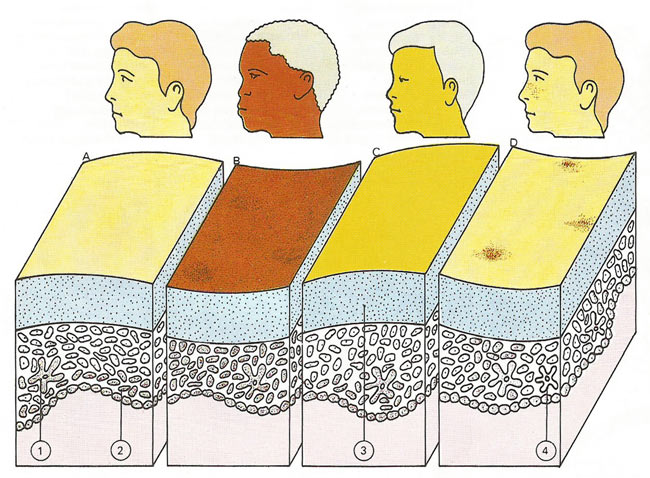melanin

Melanin is produced in the epidermis by cells known melanocytes (1) and injected into the surrounding epidermal cells (2). When the skin is exposed to sunlight melanin production speeds up to give the Caucasian (A) a protective tan. The skin of the Negroid type (B) radiates heat more efficiently than the lighter skin of Caucasians and Mongoloids. Carotene, a yellow pigment found in the horny layer (3) of skin, is more abundant in certain Asian races. Freckled skin (D) is due to pockets of pigment surrounded by in active melanocytes (4).
Melanin is a dark-brown pigment present in many animals which in different concentrations gives brown and yellow pigmentation. It occurs as granules in cells, lies in various skin layers, and is concentrated in moles and freckles. The distribution of melanin in the skin determines skin coloring, and is altered by light and certain hormones. The color of human hair is also mainly due to melanin.
Melanin is produced in the epidermis by cells known as melanocytes and injected into the surrounding epidermal cells.
Melanism is an excessive development of melanin in an animal, as in the panther, a black variety of the leopard. Animals without any pigmentation are termed albino.


